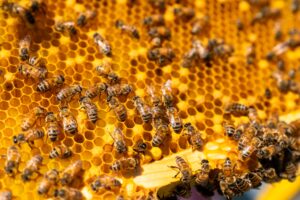We humans, we’re all just flesh and blood. And as we’ve already covered the costs of consuming flesh, let’s have some banter about imbibing blood.
Inside your vessels (blood vessels that is, not drinking vessels), blood carries just about everything your body needs. It picks up oxygen from the lungs and nutrients from the gut and hand delivers them to your cells.
But what about if you put it in your digestive system? Could you consume blood and have it provide you with all the nutrition you need to go about your daily life?

The short answer is no.
The slightly less short answer is no, because you’ll die in one of a number of unpleasant ways.
The threat of death might, to some, seem like a turn off. And yet, real human vampires still exist.
So what is it about this gothic diet that sucks us in?
WHAT’S AT STAKE?
Blood, as it exists inside you, is about 78% liquid.
When dried, it consists of about 93% protein and 1% carbohydrate. As far as protein powders go, those stats are pretty impressive. Unlike other meal supplements, however, blood is terribly low in minerals and vitamins. Malnutrition is just one of the many unpleasant ways you could die from trying to live on blood alone.
Another is haemochromatosis. This is a potentially fatal condition caused by a build-up of iron in the bloodstream, which is something that could happen if you try to drink blood.
Some practising vampires use blood as medication—an iron-rich supplement to combat blood conditions such as anaemia. For them, consuming blood is a quality of life issue and is necessary for sustaining their energy.
Any vampire will tell you this is distinct from blood fetishists, who get turned on by seeing, smelling and touching blood. This doesn’t mean that vampires don’t link sexuality to their blood drinking—some apparently feed whilst they have sex.
For both blood-loving groups of people, it’s important they take care in selecting their donors. If not, they may die from any number of unpleasant diseases. Pathogens including syphilis, hepatitis, HIV and Ebola can all be spread by coming into contact with blood.
Whilst the risks are clearly there, vampires can take steps to minimise risk to them and their donors. Most feed every couple of weeks, a few spoonfuls at a time. Some even use medical equipment to keep themselves safe.
BEHIND THE BLOODTHIRST
Whilst some vampires drink blood to make themselves feel physically better, researchers suggest that the desire to drink blood could stem from mental illness.
Schizophrenia and dissociative identity disorder have both been linked to clinical vampirism—an obsession with drinking blood that is sometimes referred to as Renfield syndrome. In Bram Stoker’s novel Dracula, R. M. Renfield is an animal-eating inmate at a lunatic asylum who believes blood is the source of life.

Some have tried to explain what sort of childhood experiences could lead someone to vampirism, suggesting the condition is psychological in nature. One psychologist reportedly cured a vampire with cognitive behavioural therapy.
This is the limit of our scientific understanding of why vampirism exists. We don’t know why someone might feel the compulsion to feed on blood, nor do we know the best way to treat it.
If reports from vampires are anything to go by, however, it may be that research into treatments isn’t necessary. In an international Vampirism & Energy Work Research Study conducted independently by vampires, only 8% of the 950 respondents answered that they would choose to cure themselves of their condition.
So whilst absolutely none of us should be on a blood-only diet, it seems that vampirism (if done carefully and with consent) isn’t that big a pain in the neck.









